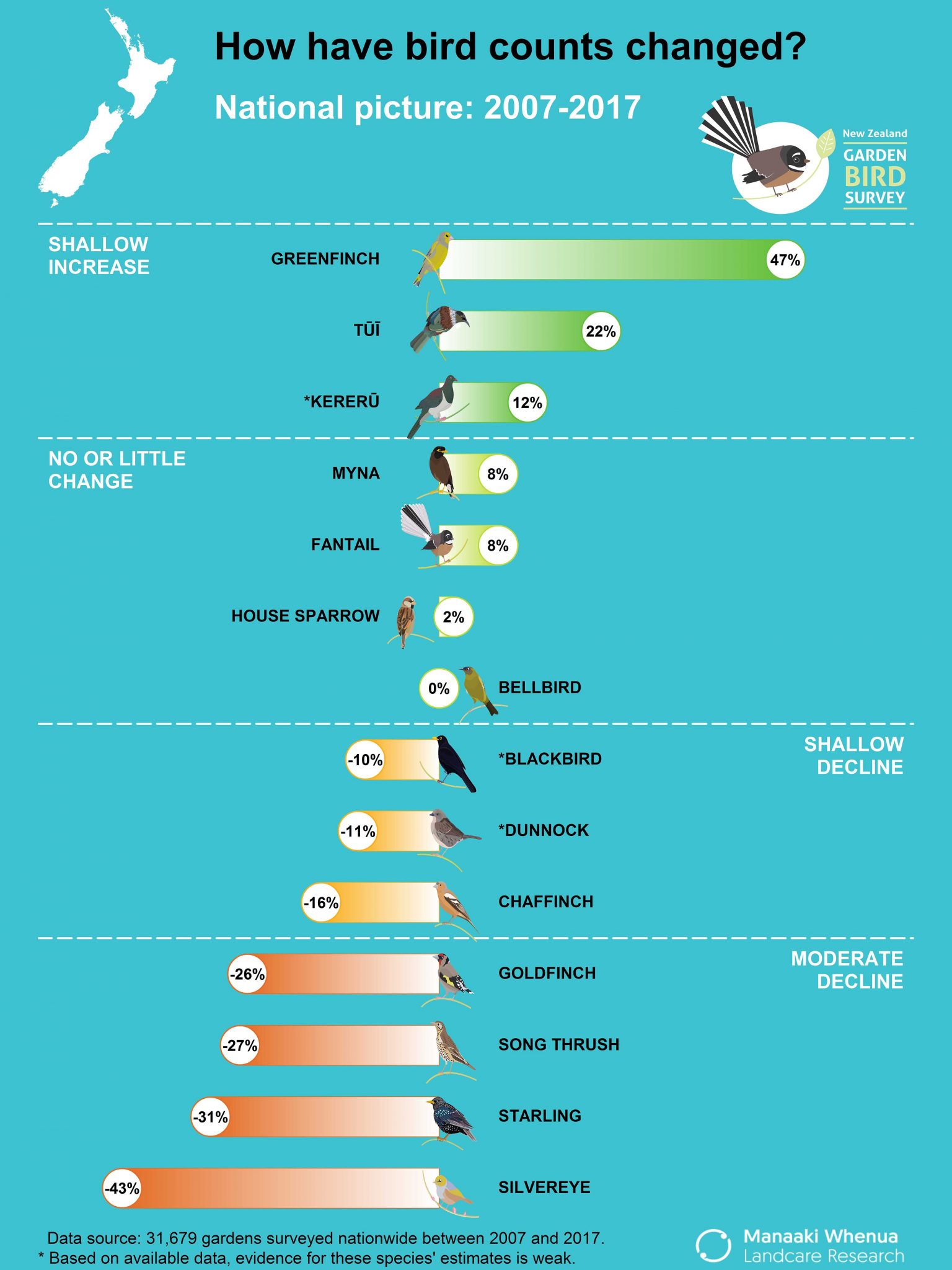Counting our blessings
In the New Zealand Garden Bird Survey
If a bird in the hand is worth two in the bush, how much value does the one in your garden have?
That’s been the focus of the New Zealand Garden Bird Survey and subsequent work by Manaaki Whenua – Landcare Research over the last 11 years. With citizen science and expert analysis we’re getting a clear view of Aotearoa’s garden bird population and what that means for our surrounding environment.
The latest results are in. According to the State of NZ Garden Birds 2017 | Te Āhua o ngā Manu o te Kāri i Aotearoa 2017, a report just released by Manaaki Whenua – Landcare Research, backyard bird numbers are signalling significant changes in our environment.
The ‘backyard barometers’ provided from the survey are collated and distilled by using a variety of cutting-edge research techniques. There’s a substantial amount of information to work with – bird counts are gathered from over 31,000 New Zealand gardens since 2007 have provided some powerful metric data, raw information that then provides valuable insight.
From these results a number of interesting trends can be seen. A positive picture is emerging for the tūī (kōkō); this species has increased across all regions, albeit at a relatively low rate. In contrast, silvereye (tauhou) counts have almost halved over the same period.
Six of New Zealand’s most common garden bird species (starling, goldfinch, chaffinch, dunnock, blackbird and song thrush) have also seen small to moderate declines.
It’s tempting to dismiss such declines as unimportant. After all, the bird species that are dropping were all introduced here from Europe.
However the change in these bird numbers is signalling change in New Zealand’s urban and rural environments with far bigger influences and implications – everything from climate to flora to human population and much more. The survey is therefore an important part of how scientists can see the bigger picture.
It’s also powered by the efforts of everyday New Zealanders.
“All you need to do is select a garden, park, or school ground, look for birds for one hour, and for each species record the highest number seen (or heard) at one time,” says Dr Eric Spurr, the survey organiser. “There are activities to get children and the young at heart excited about birds, including online quizzes, a colouring competition and printable bird masks.”
The 2018 New Zealand Garden Bird Survey will take place between the 30th of June and the 8th of July. It’s simple to undertake, only taking one hour to complete.
There are plenty of online resources to help identify your feathered neighbours too. Have a look here for some helpful tips before the day. Then follow these simple instructions:
- Visit the Garden Bird Survey website to get started
- Select a garden, park or school
- Choose any ONE day between 30 June and 8 July 2018
- Look and listen for birds for ONE hour
- Use a tally sheet (available on the website) to record for each species the highest number seen or heard at one time
- Submit your results online at: gardenbirdsurvey.landcareresearch.co.nz
To learn more about the survey: gardenbirdsurvey.landcareresearch.co.nz

